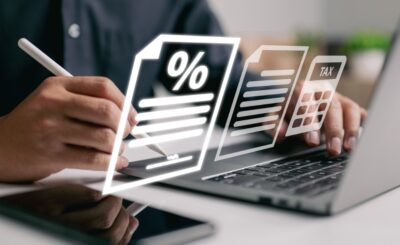Derivatives trading is a crucial aspect of modern financial markets. As financial instruments, derivatives allow investors to hedge risks, speculate on market movements, or leverage their positions. Although derivatives trading can seem complex, understanding its fundamentals can open up a world of opportunities for investors. In this article, we’ll explore what derivatives are, how derivatives trading works, and the different types of derivatives available, such as equity and currency derivatives, while also touching upon key elements like derivative brokerage, futures trading, and intraday trading.
What are Derivatives?
In simple terms, derivatives are financial contracts whose value is derived from an underlying asset. The underlying asset can be anything from stocks, bonds, commodities, currencies, or even interest rates. Derivatives enable traders to make transactions based on the price movement of these underlying assets without necessarily owning them.
What are Derivative Instruments?
There are four common types of derivatives: forwards, futures, options, and swaps. Each of these derivative instruments serves specific purposes in the financial world, ranging from speculation to hedging risk.
How Does Derivatives Trading Work?
Derivatives trading involves the buying and selling of these contracts, with the underlying assets determining their value. The derivatives market is vast, covering a wide range of asset classes and involving many different players, including institutional investors, hedge funds, and individual traders.
To trade in derivatives, participants need to open a trading account with a brokerage. Some brokers specialize in derivatives and offer tools to help traders navigate the complexities of this market. Derivatives app have also made trading more accessible by providing real-time updates, data analytics, and seamless trading interfaces.
In derivative trading, the primary goal can be either to speculate on the future price movement of the underlying asset or to hedge against potential risks. Speculators attempt to profit by betting on whether the price will rise or fall, while hedgers use derivatives to reduce their exposure to risk.
For derivative
trading, Demat account opening online is essential through a registered stockbroker.
Key Types of Derivatives: Equity and Currency Derivatives
Two major types of derivatives that are frequently traded in the stock market are equity derivatives and currency derivatives.
Equity Derivatives
These are financial contracts based on stocks or stock indexes. Equity derivatives can take the form of futures or options on individual stocks or stock indices. Traders in the equity derivatives market may speculate on the future movement of stocks without actually buying the shares. For example, if an investor believes the price of a particular stock will increase in the future, they may purchase a futures contract on that stock rather than buying the stock outright.
Currency Derivatives
These are contracts where the underlying asset is a currency or a currency pair. Investors use currency derivatives to hedge foreign exchange risk or to profit from fluctuations in exchange rates. Currency derivatives are especially important for companies or traders who engage in international trade and need to protect themselves against the volatility of currency prices.
Derivatives Trading in Stock Market
In the share market derivatives segment, derivative instruments can be based on a wide range of assets, including shares of publicly listed companies and indices. Derivative traders in the stock market primarily use instruments like stock futures and options to speculate on or hedge against stock price movements.
Futures Trading
One of the most popular forms of derivatives trading is futures trading. In futures contracts, two parties agree to buy or sell an asset at a predetermined price at a specified future date. The primary benefit of futures trading is that it allows traders to lock in prices, making it useful for hedging and speculation. For example, a trader may use stock futures to speculate on the future price of a stock, while a company may use commodity futures to lock in prices for raw materials.
Options Trading
Options give the buyer the right, but not the obligation, to buy or sell an underlying asset at a specific price before or on a certain date. Options are often used in combination with other financial instruments as part of more sophisticated trading strategies.
What are Derivatives in Stock Market With Example?
Let’s break it down with an example: Assume an investor believes that the price of a particular stock, say ABC Ltd., will increase in the next three months. Instead of buying the stock, they could buy a stock futures contract of ABC Ltd. at a predetermined price. If their prediction is correct, and the price rises above the contract price, the trader can profit by selling the futures contract at a higher price before the contract’s expiry.
This simple example shows how Derivative trading or futures and options trading in the stock market enables traders to benefit from price fluctuations without directly buying or selling the underlying asset.
Learning Derivatives Trading: Getting Started
Learning derivatives trading requires a good understanding of both the market and the instruments available for trading. Many online resources and derivatives apps can help beginners understand the intricacies of the market. The first step for new traders is to study market trends, price movements, and the basics of options and futures.
Derivative Brokerage and Costs
When trading derivatives, derivative brokerage fees can vary depending on the broker and the complexity of the trade. Brokers act as intermediaries who execute trades on behalf of their clients and charge a commission for their services. Some brokers offer discounted rates for frequent traders, while others may provide advanced tools to help navigate the derivatives market.
What is Intraday Trading in Derivatives?
Intraday trading in derivatives refers to buying and selling derivatives contracts within the same trading day. Unlike traditional investing, where investors hold assets for extended periods, intraday traders look to profit from small price movements during the day. Derivatives are commonly used in intraday trading due to their leverage, allowing traders to open larger positions with a smaller capital investment.
The Role of Derivatives in Risk Management
One of the most important uses of derivatives is in risk management. Companies, institutional investors, and even individual traders use derivatives to hedge against potential price fluctuations. For example, a company that relies on oil might use oil futures contracts to protect itself against price increases, while a trader who holds a large position in stocks might buy index options to hedge against a market downturn.
Conclusion
Understanding the market derivatives and how to use them effectively is key to making informed trading decisions. Whether you are looking to hedge risks or speculate on price movements, derivative trading in the stock market offers a wide range of opportunities for investors. By learning derivatives trading, you can take advantage of the leverage, flexibility, and versatility that derivatives offer. However, it is crucial to approach derivatives trading with a solid understanding of the risks involved and to use the right trading app and brokerage to facilitate your trades.
As with any form of investment, being well-informed and having a clear strategy are essential for success in derivatives trading. Whether you’re interested in equity derivatives, currency derivatives, or futures trading, online trading platforms such as HDFC Sky can help. Click to know more.








